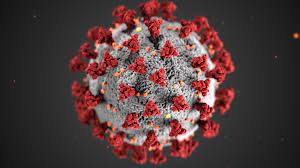A groundbreaking study has revealed an unknown mechanism in the brain responsible for migraine attacks, particularly those accompanied by aura. This discovery, published in Science, could lead to innovative treatments for migraines and other headaches.
Migraine affects over 800,000 people in Denmark, manifesting as severe headaches on one side of the head. About a quarter of these sufferers experience aura—temporary visual or sensory disturbances—preceding the migraine attack by 5 to 60 minutes. While the cause of aura was understood, the origins of the subsequent headache and its one-sided nature remained elusive.
Researchers from the University of Copenhagen, Rigshospitalet, and Bispebjerg Hospital have now identified that proteins released from the brain during a migraine with aura are transported via cerebrospinal fluid to pain-signaling nerves, triggering headaches.
“We have discovered that these proteins activate a group of sensory nerve cell bodies at the base of the skull, known as the trigeminal ganglion,” explained Postdoc Martin Rasmussen from the Center for Translational Neuromedicine at the University of Copenhagen, the study’s first author. “This area acts as a gateway to the peripheral sensory nervous system of the skull.”
The study found that at the trigeminal ganglion, the usual barrier preventing substances from entering peripheral nerves is absent. This allows proteins in the cerebrospinal fluid to access and activate pain-signaling sensory nerves, resulting in headaches.
“Our results suggest that we have identified the primary channel of communication between the brain and the peripheral sensory nervous system,” stated Professor Maiken Nedergaard, the senior author of the study. “It is a previously unknown signaling pathway crucial for the development of migraine headache and possibly other headache diseases.”
The peripheral nervous system, which includes all nerve fibers connecting the central nervous system (the brain and spinal cord) to the skin, organs, and muscles, relies on the sensory nervous system to communicate sensations like touch, itch, and pain to the brain.
This study offers a potential explanation for why migraines are typically one-sided. Rasmussen elaborated, “Most patients experience one-sided headaches, and this signaling pathway helps explain why. Our study shows that the substances are transported primarily to the sensory system on the same side, causing one-sided headaches.”
Though the study was conducted on mice, it included MR scans of the human trigeminal ganglion. The researchers believe the signaling pathway functions similarly in humans, with proteins carried by cerebrospinal fluid.
Potential for New Treatments
Using advanced techniques like mass spectrometry, which detects various proteins in samples, researchers analyzed substances released during the aura stage of migraines.
“The concentration of 11% of the 1,425 proteins we identified in the cerebrospinal fluid changed during migraine attacks,” Rasmussen noted. “Of these, 12 proteins that had increased in concentration acted as transmitter substances capable of activating sensory nerves. When these proteins are released, they are transported to the trigeminal ganglion, binding to a receptor of a pain-signaling sensory nerve, and triggering the migraine attack following the aura symptoms.”
Among the proteins identified was CGRP, already linked to migraines and used in current treatments. However, the researchers found other proteins that might lead to new treatment options.
“We hope the proteins we identified, aside from CGRP, may be used to develop new preventive treatments for patients unresponsive to current CGRP antagonists,” Rasmussen said. “The next step is to pinpoint the protein with the greatest potential.”
One identified protein is associated with menstrual migraines. “Initially, we hope to identify proteins that trigger specific migraine phenotypes,” Rasmussen explained. “We will then conduct provocation tests on humans to determine if exposure to one of these proteins can induce a migraine attack. If successful, these proteins could become targets for treatment and prevention.”
For more information, refer to the study: Martin Kaag Rasmussen et al, Trigeminal ganglion neurons are directly activated by influx of CSF solutes in a migraine model, Science (2024). DOI: 10.1126/science.adl0544.












